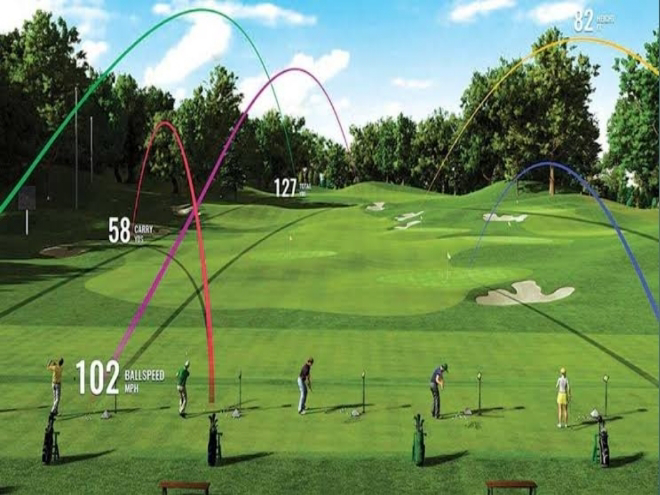Golf, frequently regarded as the sport of perfection and poise, unfolds its majesty on strictly designed geographies known as golf courses. At the heart of these courses lies a dimensionally intricate playing field that serves as the oil for golfers to showcase their mastery. In this disquisition, we embark on a trip to unravel the confines of a golf field, where each strictly measured yard and precisely drafted hazard contribute to the unique challenge that's golf. From the sprawling fairways to the subtle undulations of the flora, the confines of a golf course are a symphony of rudiments that harmonize skill, strategy, and nature. Join us as we claw into the fascinating world where skill meets perfection, and where the veritably layout of the land becomes an essential player in the game of golf.
More News:
Tennis Court Dimensions & All Measurements
The Basics:
At the core of every golf course are the fundamental dimensions that shape the challenges golfers encounter. Understanding these basic elements is crucial to appreciating the artistry and strategy embedded in the sport. Let's delve into the essentials of golf course dimensions:
(1) Hole Length:
The backbone of any golf course is its holes. Ranging from par-3 to par-5, the length of each hole varies, challenging golfers to adapt their game accordingly. Distances can span from a short hundred yards to a formidable six hundred, demanding a mix of power and finesse.
(2) Fairway Width:
The fairway acts as the artery of the golf course, guiding players from the tee box to the green. Its width is a variable that fluctuates strategically throughout the course, offering diverse challenges. From wide-open spaces to narrow corridors, fairways demand accuracy in shot placement.
(3) Rough:
Beyond the fairway lies the rough, an area of longer grass that penalizes wayward shots. The width of the rough varies, influencing the risk-reward dynamics of each hole. It tests a golfer's ability to recover and maintain control amidst less forgiving terrain.
(4) Bunker Dimensions:
Strategically placed bunkers add an element of hazard to the course. Their dimensions, including size and depth, vary to keep golfers on their toes. Bunkers serve as both visual and strategic obstacles, compelling golfers to carefully plan their shots to avoid sand traps.
(5) Green Size:
The putting green, a stage for precision and accuracy, comes in various sizes. The square footage of the green influences the complexity of the short game. Undulations, slopes, and the speed of the green's grass create a microcosm of challenges for golfers aiming to master the art of putting.
(6) Tee Boxes:
The starting point of each hole, tee boxes come in different sizes and shapes. They offer golfers a variety of angles and distances, ensuring that no two holes play the same. Tee boxes set the tone for each shot and demand strategic decision-making from the outset.
(7) Overall Course Length:
The cumulative distance of all 18 holes determines the overall length of a golf course. This metric, often ranging from 5,000 to over 7,500 yards, influences the type of skills a golfer must possess. Longer courses test endurance and power, while shorter ones may demand more precision and finesse.
Understanding these basic dimensions provides a foundation for appreciating the thoughtful design behind a golf course. It's a dynamic interplay of distances, terrains, and hazards that transforms each round into a unique and challenging experience. As we navigate through the intricacies of golf course design, we begin to see how these basic elements lay the groundwork for the captivating sport that is golf.
More News:
Dhruv Jurel: A Rising Cricket Star's Journey
Conclusion:
In conclusion, the dimensions of a golf course form the backbone of a sport that seamlessly blends skill, strategy, and the splendor of nature. From the tee box to the green, each element plays a crucial role in shaping the challenges golfers face on their quest for mastery.
The varying lengths of holes, the ebb and flow of fairways, and the unpredictable nature of roughs create a dynamic landscape that demands adaptability. Bunkers strategically placed like sentinels challenge precision, while the greens, with their undulations and contours, test the delicate touch of a golfer's putting game.
Tee boxes, the starting points of each golfing journey, offer a range of perspectives, ensuring that no two holes are alike. The overall course length, a sum of these individual challenges, determines the nature of the test awaiting golfers – be it a marathon of power and endurance or a symphony of finesse and accuracy.
Golf course dimensions are not merely measurements; they are the language through which the course architect communicates with the golfer. They tell a story, present challenges, and invite players to unravel the secrets embedded in the terrain. The golf course becomes a canvas where golfers paint their strategic strokes, showcasing their unique approach to the game.
As golf enthusiasts, whether seasoned players or eager spectators, we find ourselves immersed in a world where the fusion of nature and design results in a beautiful, challenging, and endlessly captivating playing field. The dimensions of a golf course are not just numbers on a scorecard; they are the silent architects shaping the drama, excitement, and sheer joy that define the sport of golf. So, as we step onto the first tee, let's appreciate the thoughtfulness that goes into crafting these dimensions, making every round a new and exhilarating adventure.
More News:
A Glorious Journey: Unraveling the Tapestry of NBA Champions




No comments:
Post a Comment